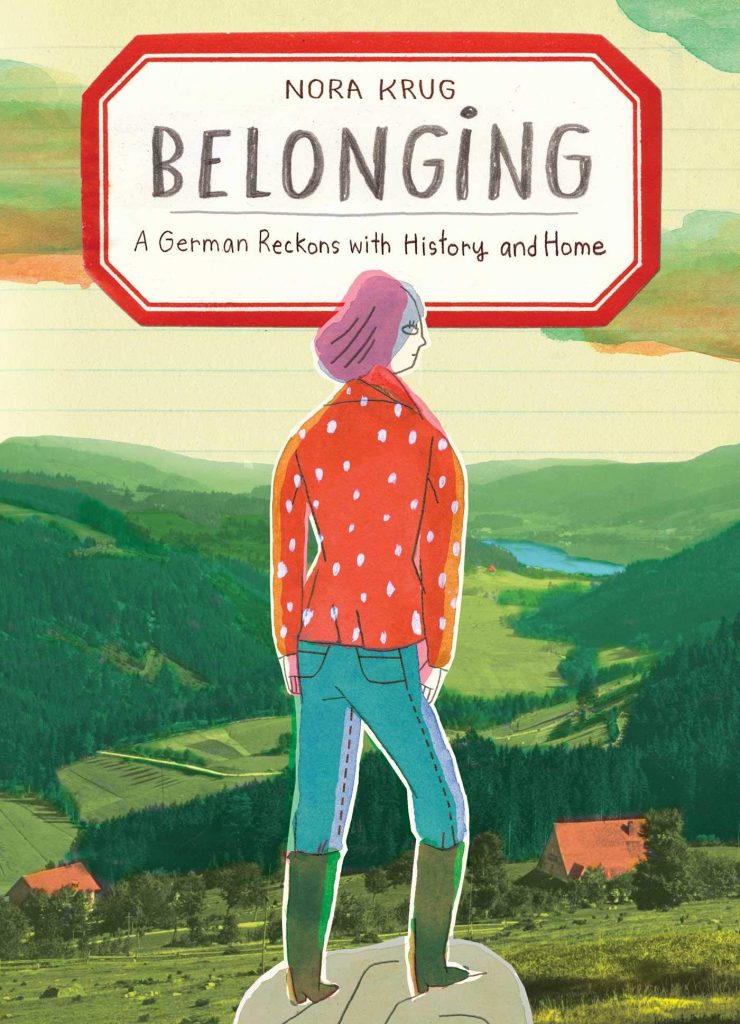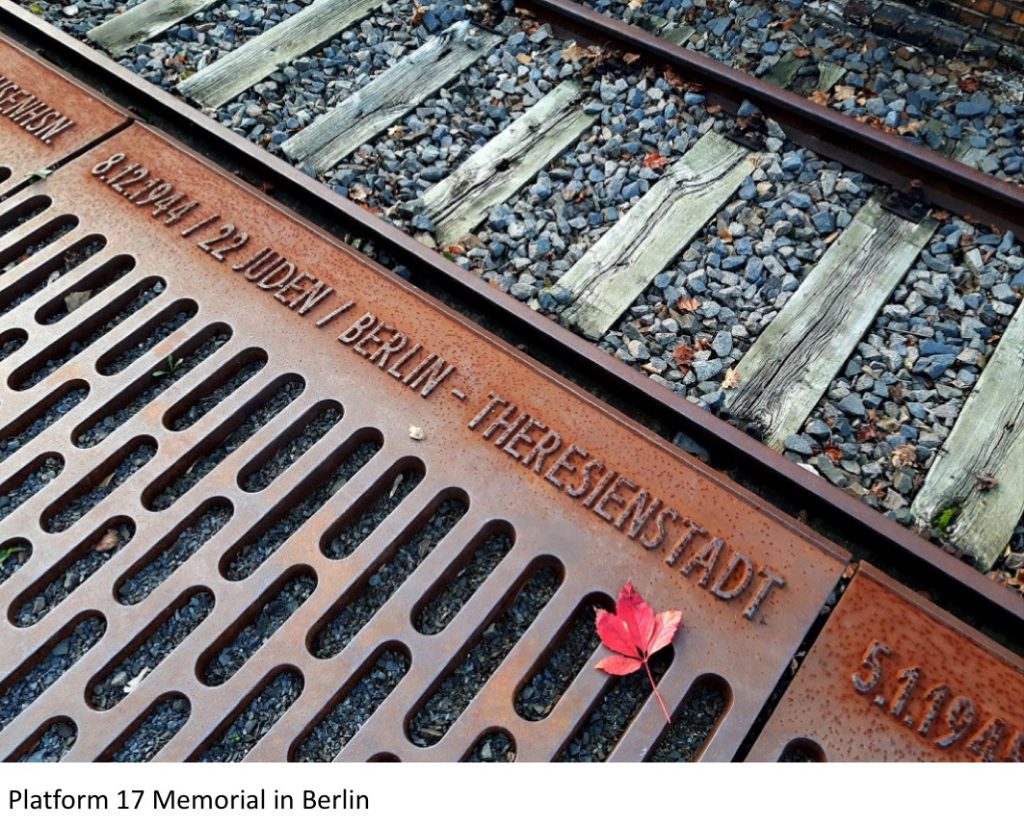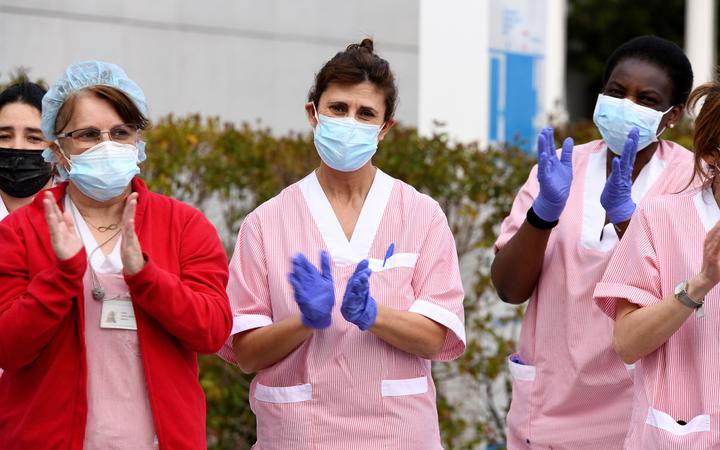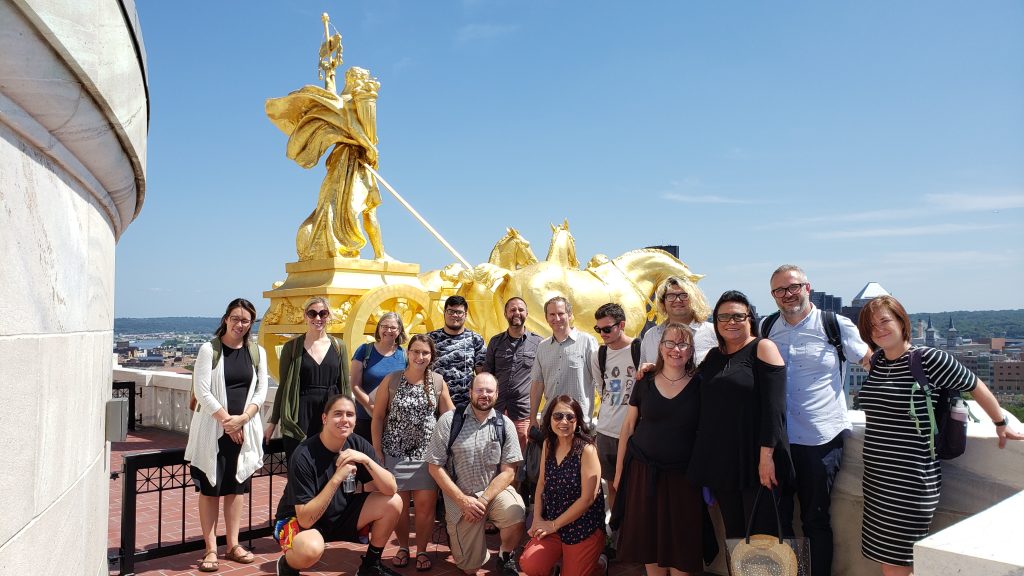Ran Zwigenberg, Associate Professor of Asian Studies, History and Jewish Studies at Pennsylvania State University, was recently hosted by the Center for Holocaust and Genocide Studies and Center for Jewish Studies. He gave a talk entitled: “Survivors: Psychological Trauma and Memory Politics in Hiroshima and Auschwitz.” I sat down with Dr. Zwigenberg for a wide-ranging conversation covering survivor politics, the gendered dimensions of social work, praxis of care, the notion of social trauma, and other topics related to the global politics of memory.*
Before the trophy went to Adolf Hitler, German Emperor and King of Prussia Wilhelm II held the award for Most Hated Man on Earth. And while Hitler’s Third Reich has become the ultimate go-to place for much journalistic handwringing about the horrible times we are living in, in reality it feels like we are still stuck in Wilhelm’s Second Reich — it’s Kaiserzeit in America. Donald Trump and the last German Emperor have a lot in common, the vanity, insecurity, the penchant for bombast and persönliches Regiment (personal rule), to name just a few. In Wilhelm’s case the brakes on his impulsive and egotistical personality came off after he fired Bismarck, the experienced chancellor he inherited from his father, and surrounded himself with sycophantic generals and noble toadies who went along with his imperial fantasies and straight into World War I.
Nora Krug is a German-American author and illustrator. Her 2018 visual memoir Belonging: A German Reckons with History and Home about WWII and her own German family history, has won numerous awards and has been translated into several languages. Krug is an Associate Professor of Illustration at the Parsons School of Design in New York City. She spoke at the University of Minnesota in February 2020.

This year’s Yom HaShoah, Holocaust Remembrance Day, is an especially important anniversary. In January, we marked 75 years since the liberation of the Auschwitz-Birkenau death camp. Since then, through our programs on and off campus, and in collaboration with the Center for Jewish Studies, we were able to reflect on the scope of the destruction of European Jewry but also on the heroic resistance and the resiliency of the survivors.

In the wake of the COVID19 outbreak, we are confronted with a globally massive threat to our health, where unparalleled measures are being proposed and enacted to counter it. We are chronicling in real-time the heroic actions of those in the field who are putting their lives on the line to make a difference coupled with heartbreaking stories of loss, separation, and suffering.
Medical personnel on the frontlines of this pandemic in my home country Spain are succumbing to illness at an astonishing rate. Currently, Spain is hobbled with the highest COVID19 caseload in all of Europe and reportedly ranks only behind the United States worldwide in terms of sheer numbers of those infected.

Several years ago, I transitioned my high school Holocaust and genocide studies elective course from an in-person class to a virtual one. At the time, I had many questions and concerns about teaching such difficult subject matter in a virtual environment. While there were certainly challenges, the switch pushed me to examine my teaching praxis more deeply, explore a flipped model of learning, and find new resources and technologies to engage both synchronously and asynchronously.
While certainly sometimes the technology seems to be more of a barrier and actual physical distance between us seems insurmountable, rich texts, robust discussions, and a common purpose inevitably bridge the gaps and bring us together as a class. In the end, I am always reminded of the resilience of my students and my own resilience as an educator. While April is going to be a difficult month for both students and educators in Minnesota and across the country, I know that we will find a way to adjust and adapt to the new and uncertain times ahead. The outpouring of support I have received from colleagues, families, and friends, gives me tremendous hope and lets me know that I am not alone.
Jillian LaBranche was born and raised in southern New Hampshire. She graduated from Rhodes College with a BA in International Studies and a minor in Religious Studies. During this time, she studied abroad in Rwanda and Uganda studying violent conflict and peacebuilding. She received an MA in International Human Rights from the Josef Korbel School of International Studies at the University of Denver and an MA in Sociology at Brandeis University. She is now a PhD student in Sociology at the University of Minnesota. Jillian serves as a member of the graduate editorial board for The Society Pages and participates in the Genocide Education Outreach (GEO) program. During the 2020-2021 academic year, Jillian hopes to begin her dissertation research.
Millions upon millions of people have been killed in concentration camps over the last century, and yet I have found myself distracted and angered about recent political debate over semantics: specifically how and when we use the term “concentration camps.”
Congresswoman Alexandria Ocasio-Cortez referred to the US government facilities used to hold asylum-seekers as “concentration camps.” Prominent voices publically disagreed with Ocasio-Cortez, saying that only Nazi camps are concentration camps. By using the term for other camps, they said that Ocasio-Cortez dishonored Jewish victims of the Holocaust.
The United States Holocaust Memorial Museum jumped into this debate, too. It implicitly shamed Ocasio-Cortez, writing that one should never analogize contemporary events to the Holocaust; that doing so may offend Holocaust survivors and their families.
There are compelling articles, books, and podcasts which address this issue. Many look at the history of concentration camps across cultures, back to the camps used in the Boer Wars in South Africa at the beginning of the twentieth century, to help us understand that “concentration camps” has consistently been a term that referred to more than the Nazi camps, and that the Nazis themselves adapted the camp technique from other societies, including the United States. You can find a shortlist of relevant links at the bottom of this article.
While growing up in Germany in the 1960s and 1970s, being evangelisch meant above all that you were not katholisch and therefore had to wait five years longer for your Confirmation presents. This was a little annoying, but in hindsight, it may qualify as my first encounter with the inner-worldly asceticism that Max Weber describes in The Protestant Ethic and The Spirit of Capitalism. Delayed gratification aside, the German evangelical church at the time came across as benign, even reasonable, open to critical discussion and staffed with laid-back, progressive pastors. It was the seventies after all. Nobody would have spelled evangelical with a capital “E” back then, at least not in Europe. That Protestantism in the US could take on a very different flavor didn’t occur to me until I moved to California in the early 2000s and it was my daughter’s turn for Confirmation class. There was a lot about Satan in the curriculum and all the things you could go to hell for, like not showing up for class at Bethany Lutheran Church.
In 2019 I attended a summer workshop for teachers held by the CHGS, titled “Teaching About Genocide.” As part of the workshop, we, along with two Native American activists-teachers, toured the Minnesota State Capitol with a docent. Entering the main chamber of the capitol, our guide gestured toward several portraits of white males who colonized Minnesota. She, an employee of the state, noted they were the men “who discovered Minnesota.” Here, in the most prominent institution of Minnesota government, a guide had normalized colonialism, except the normalization was now being heard by a critical audience. The statement seemed bracingly out of step with our appreciation of multiculturalism, the celebration of ethnic and racial diversity, and acknowledgment of the centrality of indigenous peoples to the shared fabric of American history.

